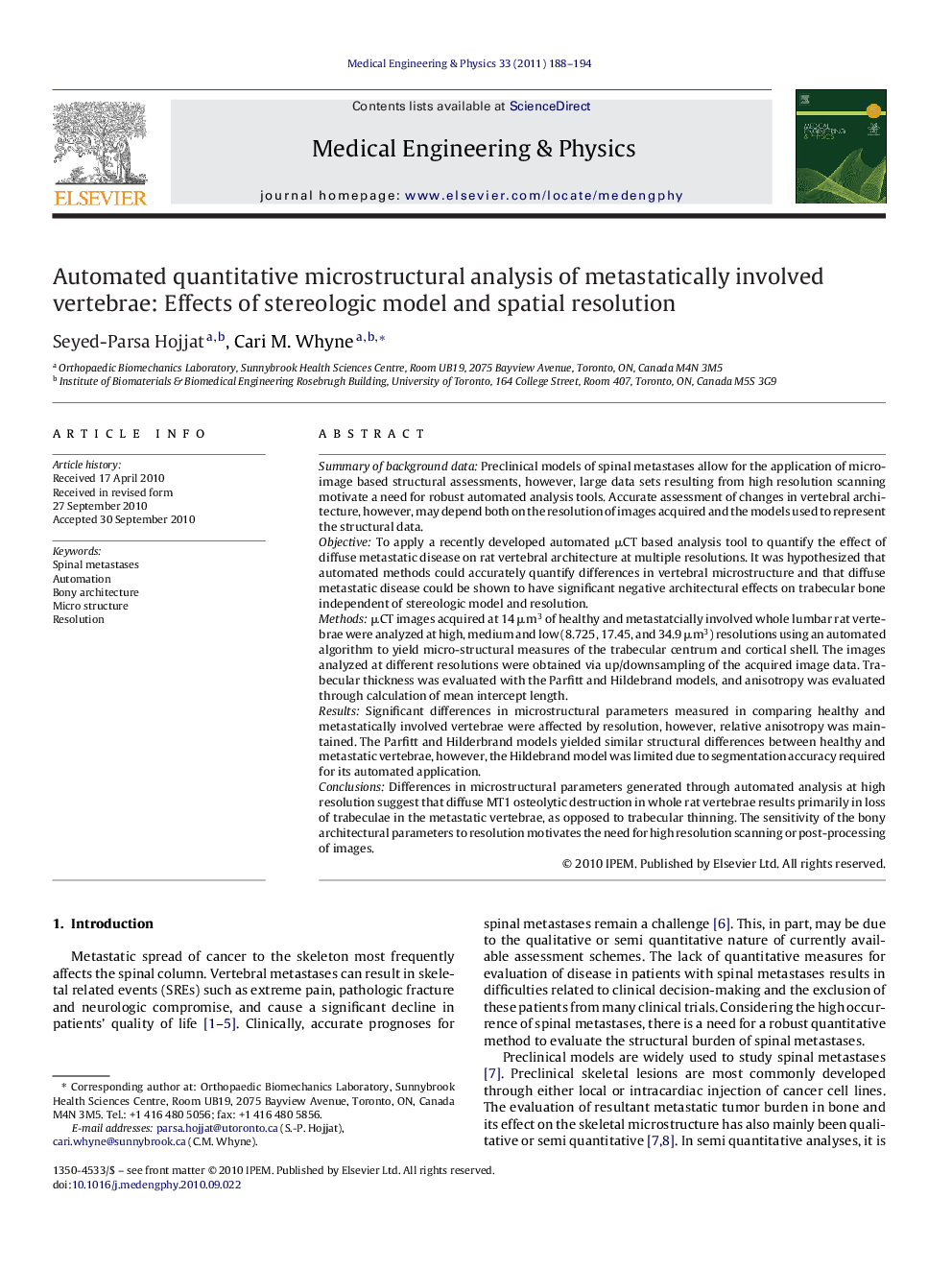| Article ID | Journal | Published Year | Pages | File Type |
|---|---|---|---|---|
| 876398 | Medical Engineering & Physics | 2011 | 7 Pages |
Summary of background dataPreclinical models of spinal metastases allow for the application of micro-image based structural assessments, however, large data sets resulting from high resolution scanning motivate a need for robust automated analysis tools. Accurate assessment of changes in vertebral architecture, however, may depend both on the resolution of images acquired and the models used to represent the structural data.ObjectiveTo apply a recently developed automated μCT based analysis tool to quantify the effect of diffuse metastatic disease on rat vertebral architecture at multiple resolutions. It was hypothesized that automated methods could accurately quantify differences in vertebral microstructure and that diffuse metastatic disease could be shown to have significant negative architectural effects on trabecular bone independent of stereologic model and resolution.MethodsμCT images acquired at 14 μm3 of healthy and metastatcially involved whole lumbar rat vertebrae were analyzed at high, medium and low (8.725, 17.45, and 34.9 μm3) resolutions using an automated algorithm to yield micro-structural measures of the trabecular centrum and cortical shell. The images analyzed at different resolutions were obtained via up/downsampling of the acquired image data. Trabecular thickness was evaluated with the Parfitt and Hildebrand models, and anisotropy was evaluated through calculation of mean intercept length.ResultsSignificant differences in microstructural parameters measured in comparing healthy and metastatically involved vertebrae were affected by resolution, however, relative anisotropy was maintained. The Parfitt and Hilderbrand models yielded similar structural differences between healthy and metastatic vertebrae, however, the Hildebrand model was limited due to segmentation accuracy required for its automated application.ConclusionsDifferences in microstructural parameters generated through automated analysis at high resolution suggest that diffuse MT1 osteolytic destruction in whole rat vertebrae results primarily in loss of trabeculae in the metastatic vertebrae, as opposed to trabecular thinning. The sensitivity of the bony architectural parameters to resolution motivates the need for high resolution scanning or post-processing of images.
